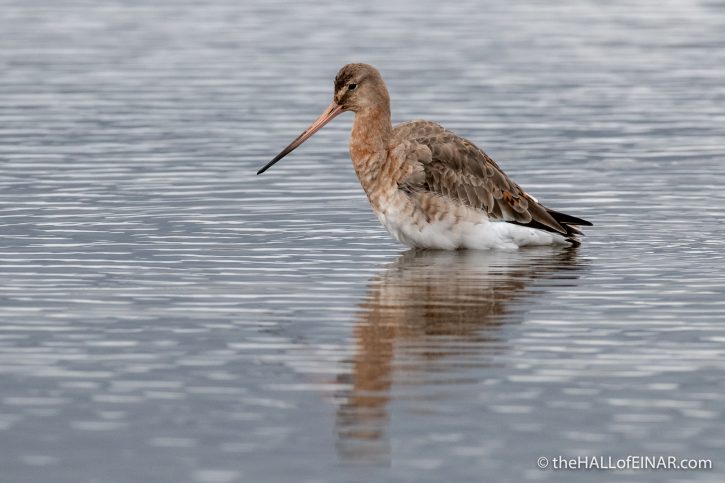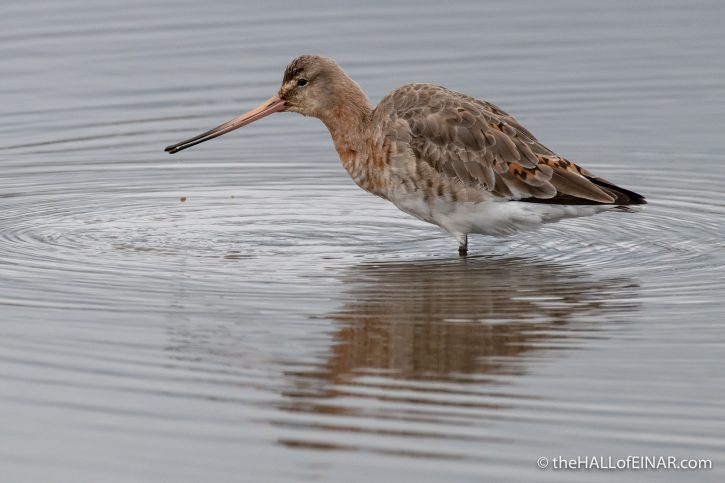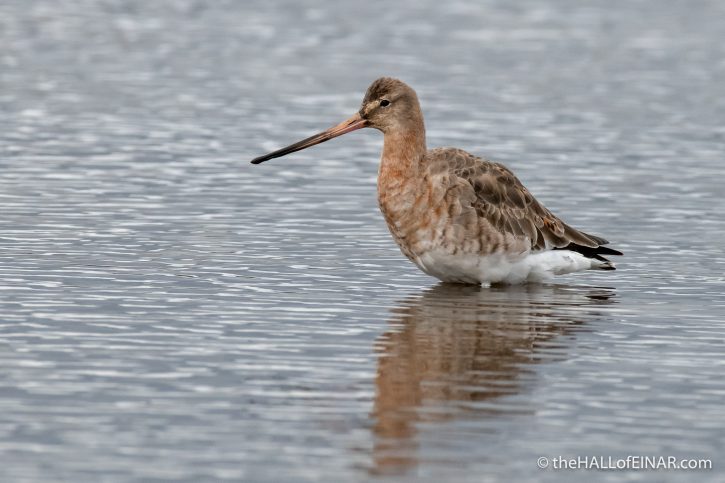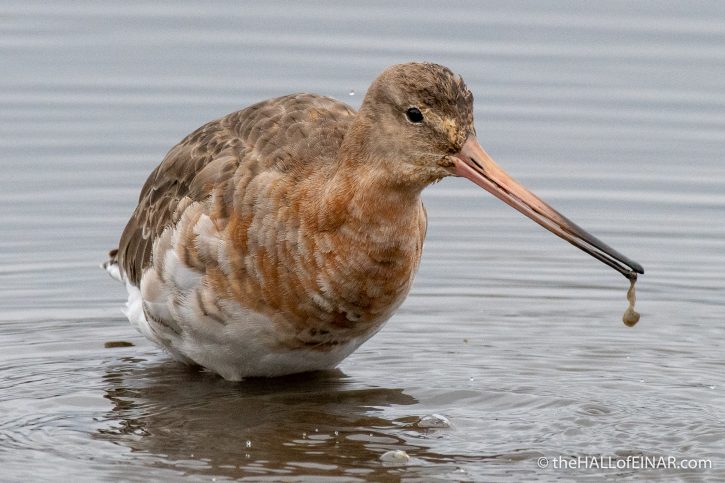Black-Tailed Godwits
I’ve seen Black-Tailed Godwits before, but never this close:
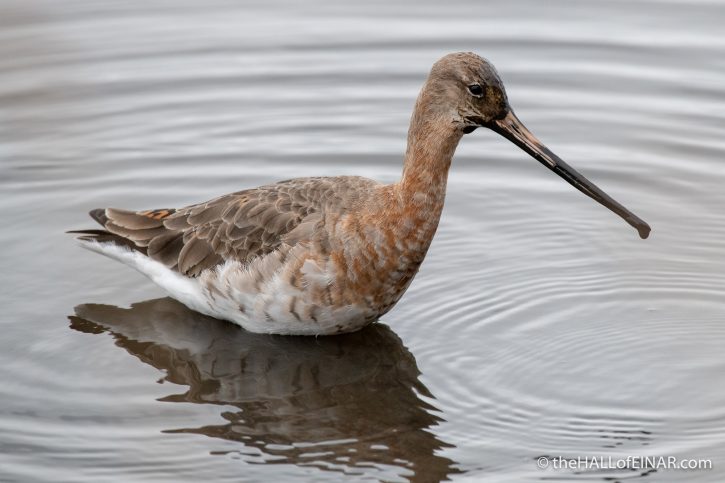
If I was a birder I’d describe this as not just ‘showing well’, but as ‘confiding’. I might even describe the views as ‘crippling’. As I’m not birder, I won’t.
This photograph summarises how a Black-Tailed Godwit feeds:
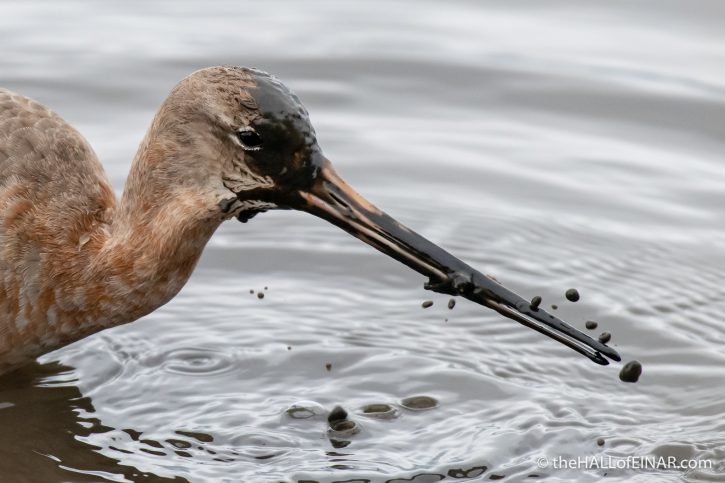
They are probing the mud with a sewing-machine action and searching for invertebrates.
I’ve seen them in flocks on the River Exe, looking like musical notes on a stave:
Like many birds the species has distinct differences between the males and the females. Scientists refer to it as sexual dimorphism. Despite many bird books showing illustrations of male birds as bigger than females, the size difference is usually the other way around.
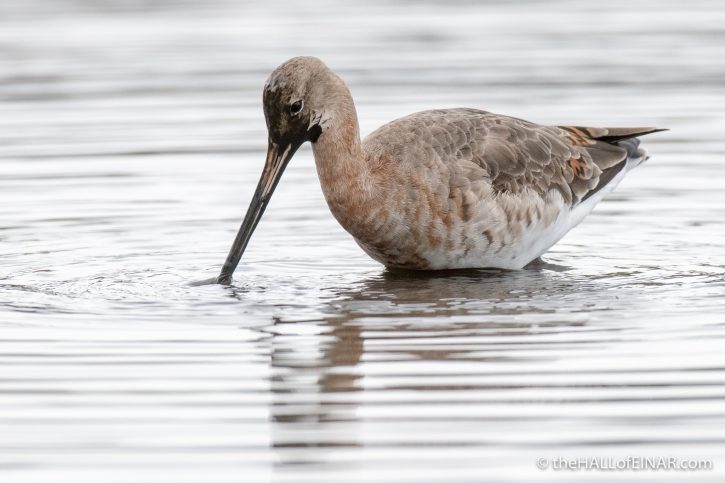
Females Black-Tailed Godwits have longer beaks. I just need a pair here now to be able to compare them. The longer beak might mean males and females can feed in the same area, and yet eat different things, because they probe different depths into the mud.
Their formation flying is spectacular:
It’s a grey day at RSPB Lodmoor but their bright summer plumage is appearing with a cheerful ginger tinge. We have 40 or 50,000 Black-Tailed Godwits here in winter which disappear in the summer back to Iceland to breed.
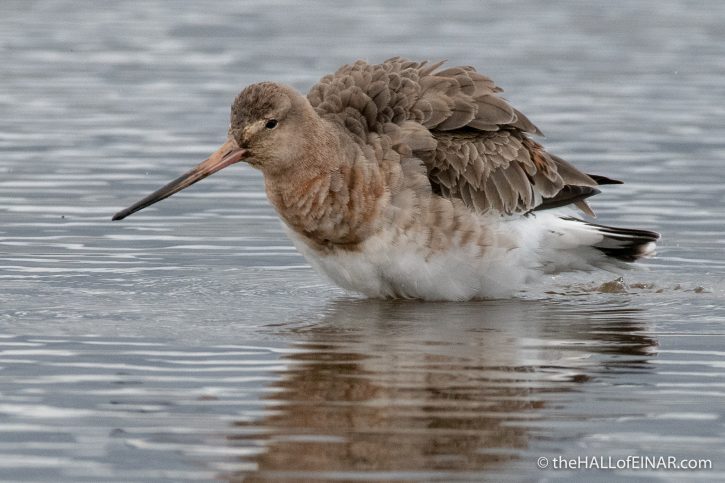
It’s nearly time to say “See you next year”. I’ll be sad to see them go.
